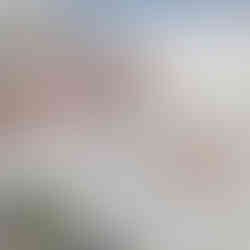Trading China: Paintings of the Porcelain Production Process in the Qing Dynasty
- HKMM
- Mar 10, 2022
- 3 min read
Updated: Mar 27, 2022
During the 18th century, from the entry of European traders into China, an enormous export market for fine Chinese porcelain was opened. Given their scarcity in Europe and exclusivity for the wealthy classes, fine porcelain wares were very costly. This led Westerners to experiment with producing their own porcelain at first imitating the Chinese style. Although Chinese motifs were adapted by European artisans, the technique of producing high-fired porcelain was not yet discovered.
The curiosity on the secret of making porcelain opened a Western market for the kind of painting series on the Jingdezhen production. The set of 34 paintings at the HKMM does more than describe the factory at Jingdezhen. It shows the division of labour, the logistics of both imperial and export commissions, the foreign merchants in Canton and the Chinese folk religion.

1. Division of labour and preparation
The series opens with an official commission arriving at Raozhou Prefecture which governed the Fuliang locality, including Jingdezhen. An official had been sent directly from the Imperial Household Department to reside in Jingdezhen to supervise the imperial production since 1728.
2. Porcelain Production Process
The transport routes for both the raw materials going into Jingdezhen and the porcelain coming out of it are noteworthy. The availability of the raw materials, porcelain stone (baidunzi 白墩瓷) and kaolin clay, and the water transport for these materials, wood fuel and the finished products, all contributed to the growth of the porcelain industry in Jingdezhen.
3. Logistics of both imperial and export commissions
The Jingdezhen episode finishes with a scene bidding farewell to the purchaser, who came from Canton. In between there are scenes describing the Canton merchant’s adventures in Jingdezhen, including a feast at the broker’s house, and pressing for delivery at a porcelain shop where he negotiates for the replacement of defective goods. Leaving Jingdezhen, the merchant’s activities continue with a sea voyage on Poyang Lake which takes him to Nanchang where the porters cross the mountain pass into Canton.
4. Foreign Merchants in Canton
According to an imperial edict of 1759, the activities of foreign merchants in Canton were strictly monitored. Their activities had to be conducted through Co-hong merchants and Chinese interpreters. However, the inclusion of Westerners in these scenes reflects the important role of Canton in foreign trade. Canton was the birth place of the genre of China trade painting illustrated by the series described here.
5. Offerings to the god of fire, in thanks for the acquisition of wealth

The major fire god worshipped by Jingdezhen potters is Tong Bin. According to legend, as a potter he threw himself into a kiln leading to the successful firing of a dragon fish jar in the Ming dynasty.
The last scene shows the joyous atmosphere during such an offering ceremony in Canton. The performance pays tribute to the god of fire for his blessings on the workmen in the previous year.
In Memoriam
This blog is dedicated to the late Susan Chen hardy, a passionate connoisseur and collector of Chinese Art. A longtime supporter of the HKMM, Susan’s generous donation of the 34 paintings herein described represents an important contribution to promoting public understanding of traditional Chinese porcelain production.
Text and Picture Sources
Jane Sze, Caroline Lang, Phoebe Tong, Kenny Yuen, “TRADING CHINA Paintings of the Porcelain Production Process in the Qing Dynasty” Hong Kong: Hong Kong Maritime Museum, 2015




































































